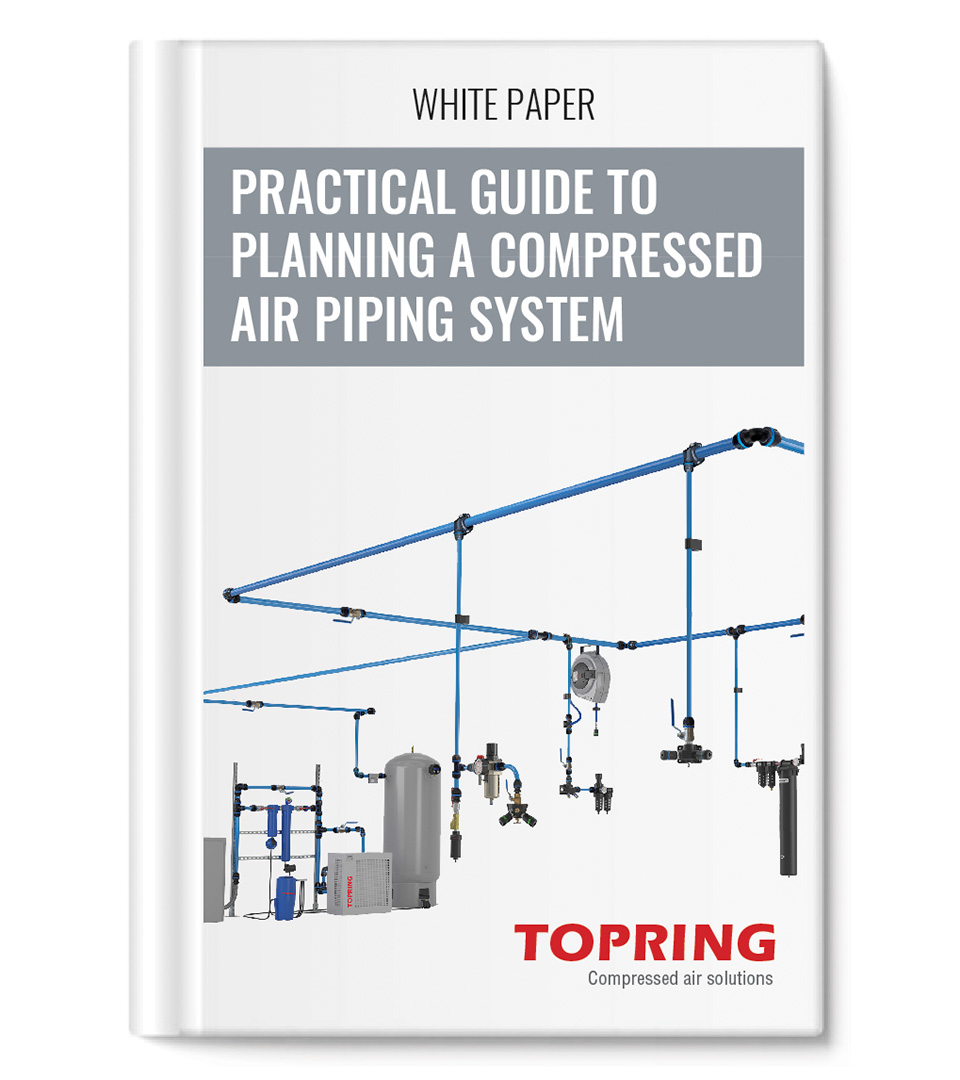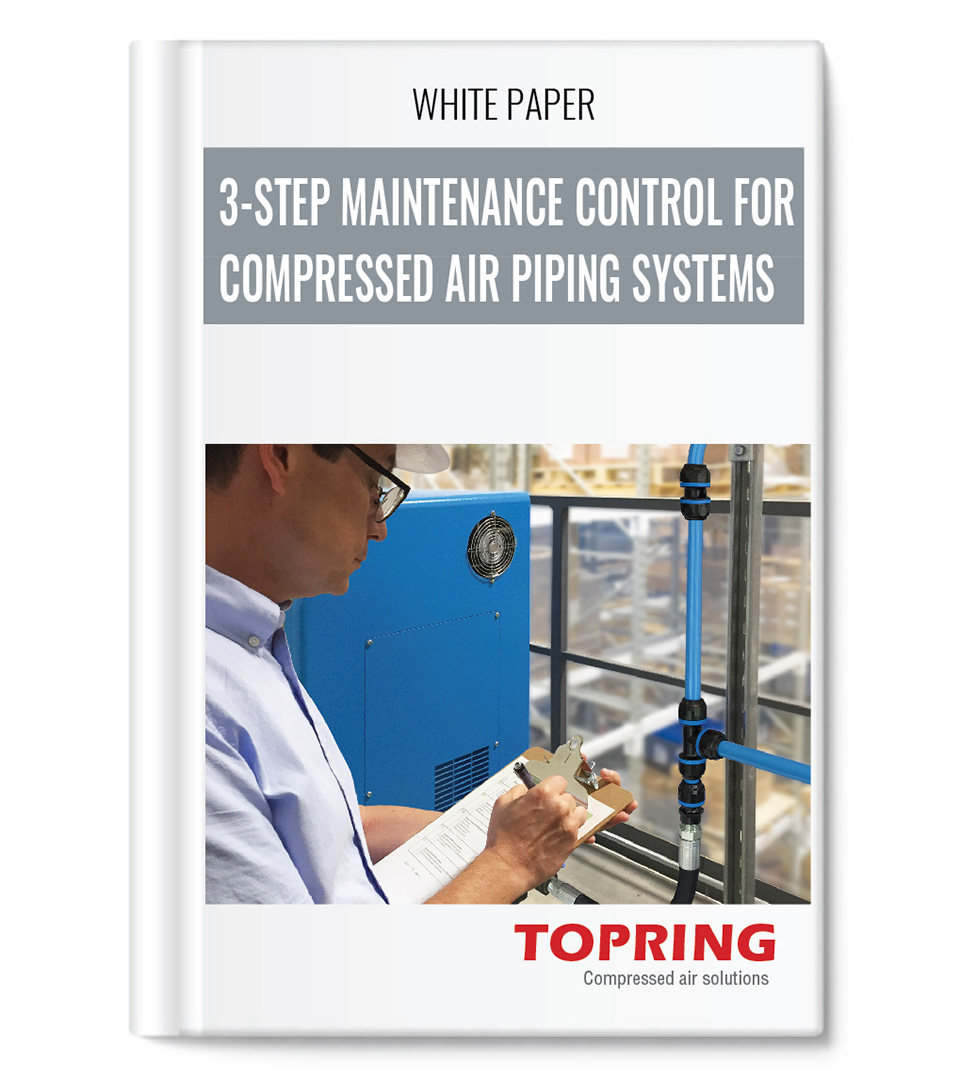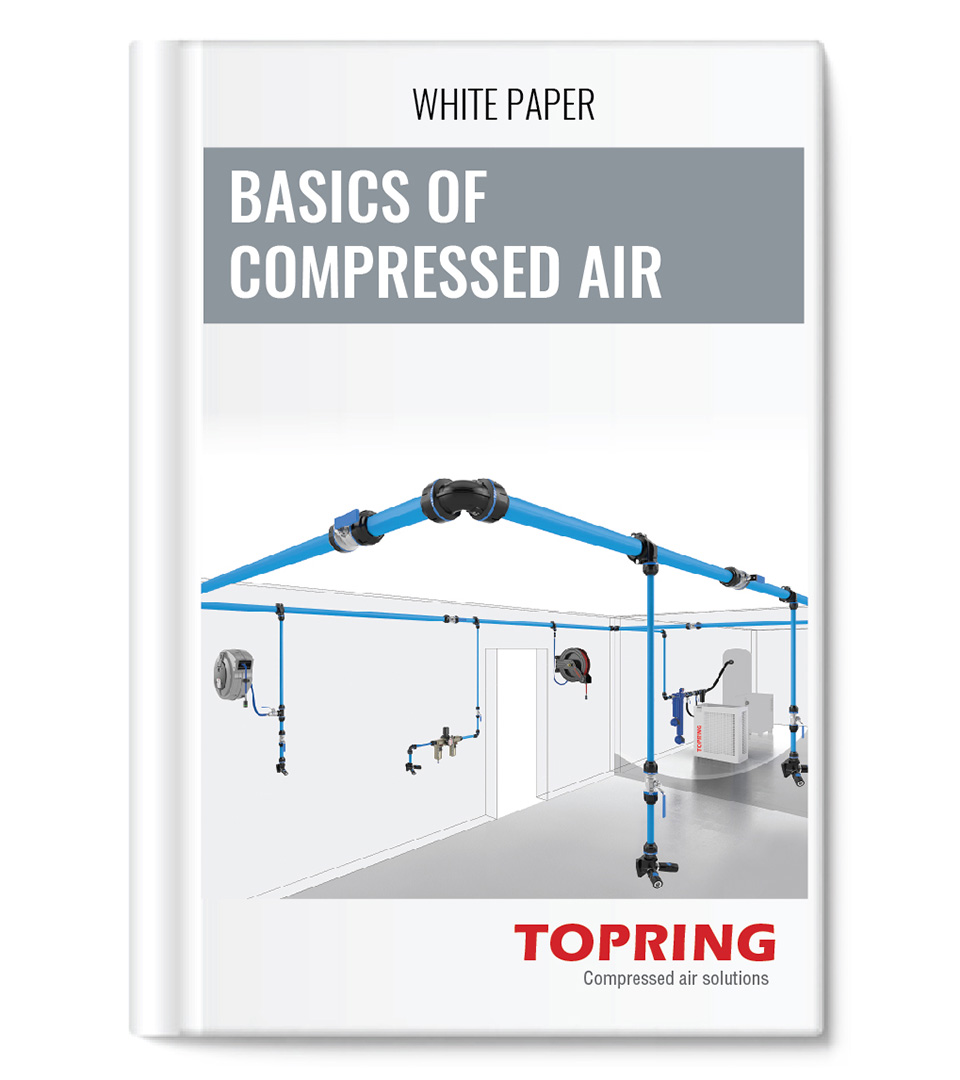
Practical Guide to Planning a Compressed Air Piping System
This guide presents an introduction to compressed air systems. Through 6 big questions, discover the different possibilities and the one that best suits your needs and your situation. A document to read before making a decision on the planning and design of your compressed air distribution system.

3-Step Maintenance Control for Compressed Air Piping Systems
This optimization guide for the maintenance manager presents a 3-step maintenance control for compressed air piping systems. Learn more about how to improve the energy efficiency and performance of your pneumatic tools and equipment. Use the list of control steps found in this white paper as your working tool.

Basics of Compressed Air
Compressed air is an important source of energy for several industrial applications. It is used for many applications because it entails several advantages. Through 7 questions, learn more about the basics of compressed air. Understanding the fundamentals is the best way to manage this energy source and make sure it is used safely, efficiently, and optimally.
